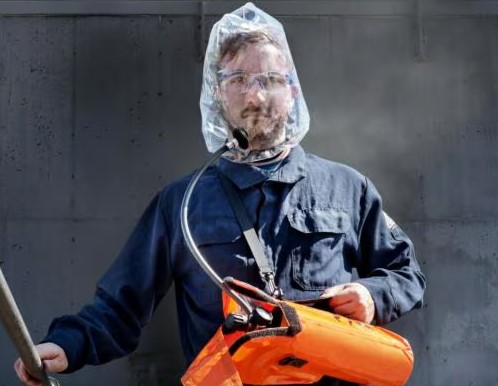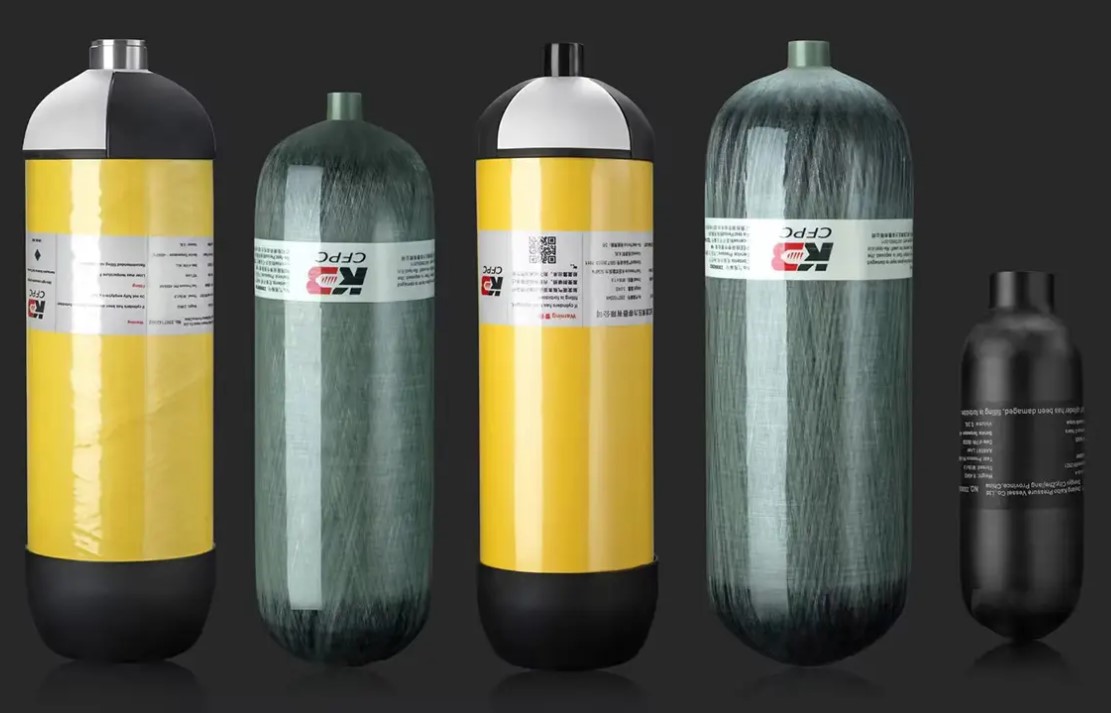Mine rescue is a critical and highly specialized operation that involves the immediate response of trained teams to emergency situations within mines. These teams are tasked with locating, rescuing, and recovering miners who may be trapped underground following an emergency. Emergencies can range from fires, cave-ins, explosions, to ventilation failures, all of which can create dangerous, life-threatening environments. Mine rescue teams are also responsible for restoring critical systems like ventilation circuits and fighting underground fires when necessary.
One key element that makes these operations possible is the use of specialized equipment that ensures the safety and survival of both miners and rescuers. Among this equipment, Self-Contained Breathing Apparatus (SCBA) units play an essential role. These units allow rescue personnel to breathe safely in environments that lack breathable air, and at the heart of these SCBA systems are the carbon fiber cylinders that store compressed air. This article explores the function and importance of these carbon fiber composite cylinders in mine rescue operations.
The Role of SCBA in Mine Rescue
During a mine emergency, the atmosphere can quickly become hazardous due to factors such as smoke, toxic gases, or oxygen depletion. To perform their duties in such an environment, mine rescue teams use SCBA units. These units provide them with a safe, breathable air supply while operating in dangerous atmospheres. Unlike external oxygen supplies that may be rendered useless during disasters, SCBA units are self-contained, meaning they carry their own air supply in a high-pressure cylinder, enabling mobility and flexibility for rescue teams.
Carbon Fiber Composite Cylinders: The Backbone of SCBA Systems
Traditionally, SCBA cylinders were made of steel or aluminum. However, these materials, though strong and durable, are heavy and can be a burden for rescuers who need to move quickly and efficiently in confined underground spaces. Modern SCBA systems now utilize carbon fiber composite cylinders, which offer significant advantages in terms of weight and strength.
1. Lightweight Design
Carbon fiber is significantly lighter than steel or aluminum. This weight reduction is especially important for mine rescue teams, who often need to carry SCBA units for extended periods of time while navigating tight, hazardous spaces. A lighter cylinder allows rescuers to move more freely, reducing fatigue and enhancing operational efficiency. In many cases, the weight of a carbon fiber composite cylinder is up to 60% less than traditional steel cylinders.
2. High Tensile Strength
Despite being lightweight, carbon fiber offers impressive tensile strength, meaning it can withstand high-pressure environments. Mine rescue operations require cylinders that can hold large volumes of compressed air, typically at pressures up to 4500 psi (pounds per square inch). Carbon fiber’s strength allows these cylinders to maintain such high pressures without risk of rupture, ensuring that rescuers have enough air supply for the duration of their mission.
3. Durability in Harsh Conditions
Mines are challenging environments where equipment is exposed to rough conditions, including impacts, vibrations, and extreme temperatures. Carbon fiber composite cylinders are highly durable and resistant to external damage. Their layered construction, typically involving a thin aluminum or polymer liner wrapped in carbon fiber, provides a high level of structural integrity. This makes them ideal for use in rescue situations where equipment must withstand tough conditions without compromising safety.
Carbon Fiber Cylinders in Mine Rescue Missions
The use of carbon fiber cylinders in SCBA systems during mine rescue missions is critical for several reasons:
- Extended Duration of Air Supply: Mine rescue missions can be unpredictable, often requiring extended periods of time underground. The capacity of carbon fiber cylinders to store large volumes of air ensures that rescuers can work safely for longer durations without needing to switch out cylinders or return to the surface. This is crucial when every second counts in reaching trapped miners.
- Mobility in Confined Spaces: Mines are notorious for their narrow tunnels and difficult-to-navigate environments. The lightweight nature of carbon fiber cylinders allows rescuers to move more easily through these tight spaces, maintaining agility and reducing the physical toll on their bodies. This flexibility is vital when teams need to climb over debris or maneuver through collapsed areas.
- Quick Deployment and Reliability: In emergency situations, time is of the essence. Rescue teams need equipment that is reliable and easy to deploy. Carbon fiber cylinders are highly reliable and undergo rigorous safety testing, including hydrostatic testing every five years to ensure they meet safety standards. Their light weight also makes it faster and easier for teams to equip themselves with the necessary gear before entering a hazardous zone.
Maintenance and Testing of Carbon Fiber Cylinders
While carbon fiber composite cylinders offer numerous advantages in mine rescue operations, they do require regular maintenance and testing to ensure they are always ready for use. SCBA cylinders, including those made from carbon fiber, must undergo periodic hydrostatic testing, typically every five years, to check for leaks or weaknesses in the cylinder’s structure. Visual inspections are also conducted regularly to identify any damage, such as cracks or punctures, that may affect their performance.
Additionally, carbon fiber cylinders typically have a service life of 15 years, after which they must be replaced. It is essential that rescue teams maintain a proper inventory of their equipment and adhere to testing schedules to ensure the cylinders perform effectively during a mission.
Conclusion: Carbon Fiber Cylinders as a Lifesaving Tool in Mine Rescue
Mine rescue is a demanding and dangerous operation that relies on advanced technology and equipment to protect both rescuers and miners. Carbon fiber composite cylinders have become a critical component of SCBA systems due to their lightweight, strength, and durability. These cylinders enable mine rescue teams to operate efficiently in hazardous environments, providing them with the breathable air they need to perform their lifesaving duties.
As technology continues to evolve, carbon fiber composite materials are likely to play an even greater role in enhancing the safety and effectiveness of mine rescue operations. By ensuring regular maintenance and testing, these cylinders will continue to be a reliable tool in the effort to save lives in emergency situations underground.
Post time: Sep-25-2024


